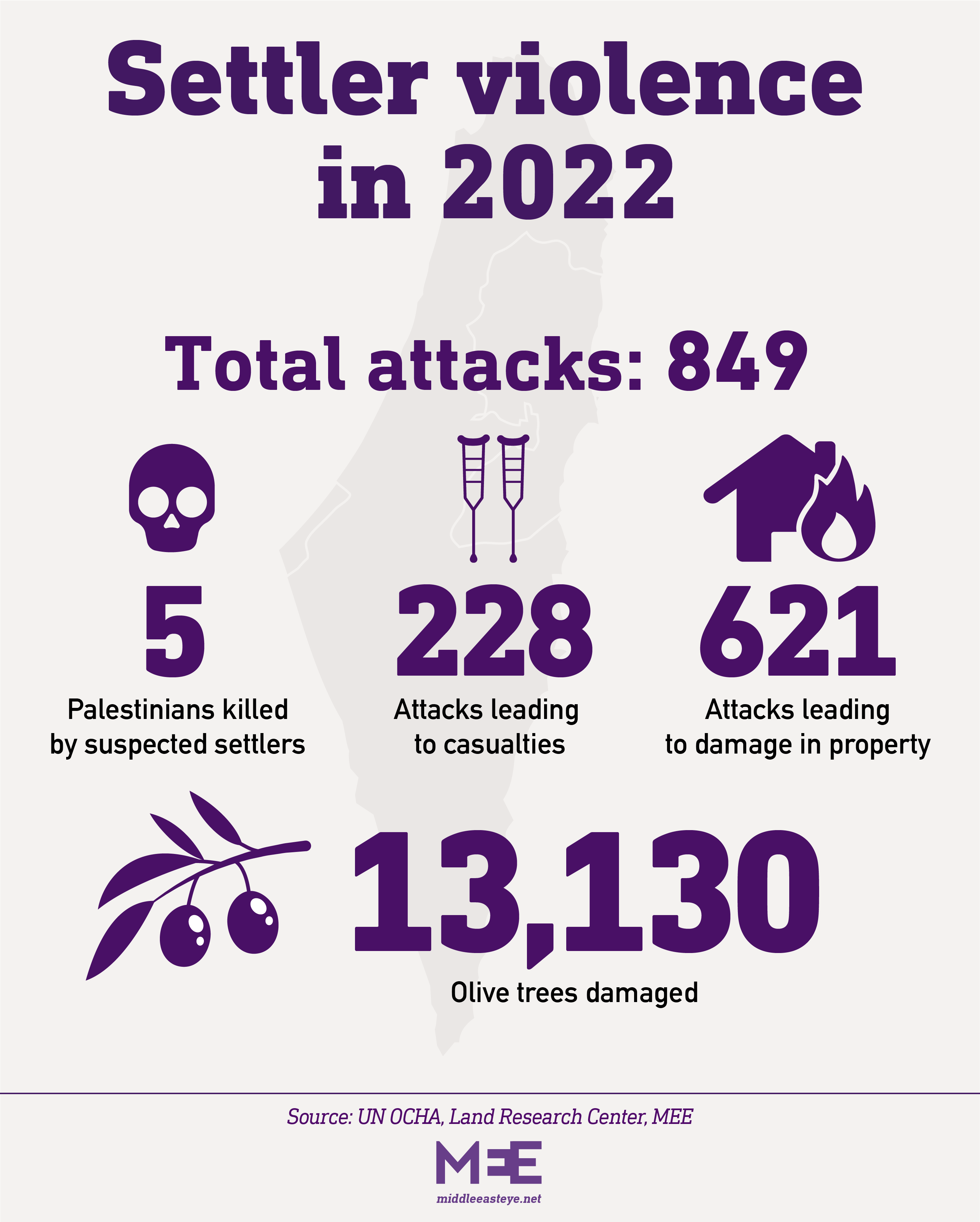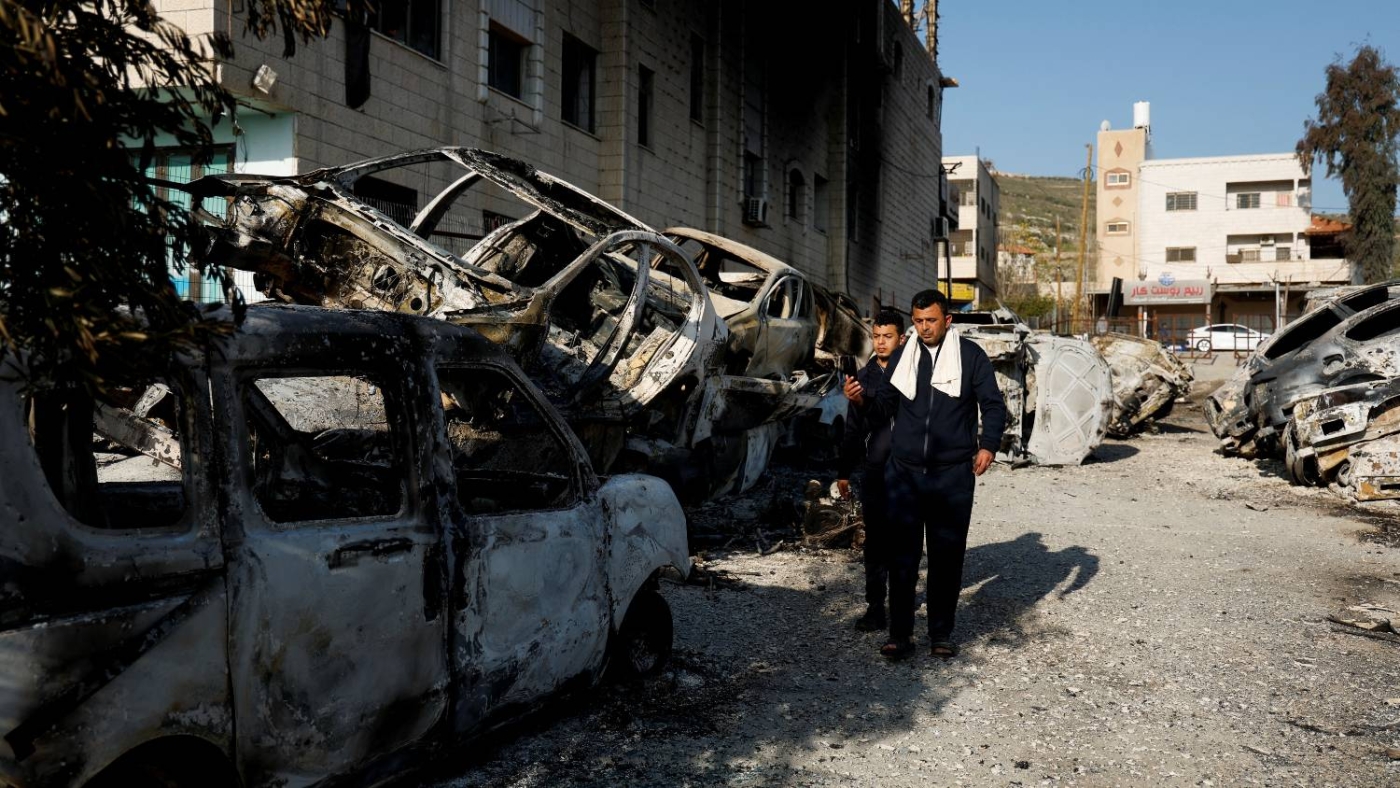Israeli military informs the country's political leadership that further rampages by settlers could result in a spiral of violence

Israeli soldiers stand next to a damaged Palestinian building in the town of Huwwara, near the West Bank city of Nablus (AP)
MEE staff
Published date: 28 February 2023 1
Israeli forces resumed their nightly raids in the occupied West Bank on Tuesday after a week-long lull, following an unprecedented rampage over the weekend by Jewish settlers.
Eight Palestinians, which Israel claims are wanted individuals, were detained on Tuesday.
The raids have become a regular occurrence for Palestinians in the occupied territories, inflaming tensions and resulting in a spike in violence since Israel intensified them last year.
Israeli forces are also seeking two suspected Palestinian gunmen, one following a shooting in the West Bank town of Huwwara that left two Israeli settlers dead on Sunday and another shooting on Monday evening which left a 27-year-old Israeli-American dead.
Israeli forces have tightened their grip on the city of Jericho following the shooting, with the attacker believed to have fled towards the city.
Israeli military officials are also increasingly worried about the situation in the West Bank spiralling out of control.
'Another night of riots like that, and we’ll reach a point of no return'
- Major General Yehuda Fuchs, Israeli army
Israeli forces killed 11 Palestinians, including a child and three elderly people, and wounded 100 others last Wednesday during a military raid in the occupied West Bank city of Nablus.
The weekend's rampage by settlers has also been described as unprecedented in nature.
At least one Palestinian was killed and nearly 400 were wounded in the attacks on Huwwara and other West Bank towns and villages, Palestinian health officials said.
Settlers completely burnt down at least 35 homes and 40 others were partially damaged, and many of the buildings were set on fire while their Palestinian inhabitants sheltered inside. More than 100 cars were burnt or otherwise destroyed.
Eight settlers were detained following the riots, six were released on Monday and a further two on Tuesday, according to Israeli law enforcement.
Israeli military officials believe that tensions will continue into Ramadan, which begins at the end of March.
Leading official Major General Yehuda Fuchs warned Israeli Prime Minister Benjamin Netanyahu during a security briefing that the Huwwara rampage threatened to push the situation in the occupied territories out of control.
“Another night of riots like that, and we’ll reach a point of no return,” Fuchs told Netanyahu, according to Israeli media.
“All of us went through an Intifada, but no one went through an Intifada that had online incitement, which makes the riot even more dangerous,” Shin Bet chief Ronen Bar also reportedly said in the security discussion with Netanyahu.
Settler violence
Israeli authorities are also under pressure to arrest the perpetrators of the Huwwara riot.
"We expect the Israeli government to ensure full accountability and legal prosecution of those responsible for these attacks in addition to compensation for the loss of homes and property,” State Department spokesperson Ned Price said during a press briefing.

Israel-Palestine: CIA chief warns current tensions resemble Second Intifada
According to the Israeli military, on Monday night, a group of settlers hurled stones and purportedly attempted to ram a vehicle into an Israeli officer.
Separately on Sunday, a group of Israeli settlers assaulted a senior officer near a West Bank settlement, according to the Israeli military.
Israeli settlers are often detained for acts of violence towards Palestinians or Israeli officers and quickly released.
Rioting settlers feel “immune to the law. Fear of the state does not apply to them,” wrote Nahum Barnea for Israeli news outlet Ynet.
At least 62 Palestinians have been killed by Israelis this year, at a rate of more than one fatality per day. Meanwhile, 13 Israelis and one police officer have been killed by Palestinians in the same period.
This follows a steep increase in violence in 2022 when at least 167 Palestinians were killed in the West Bank and East Jerusalem, the highest death toll in those territories in a single year since the Second Intifada. Palestinian attacks killed 30 Israelis last year.













